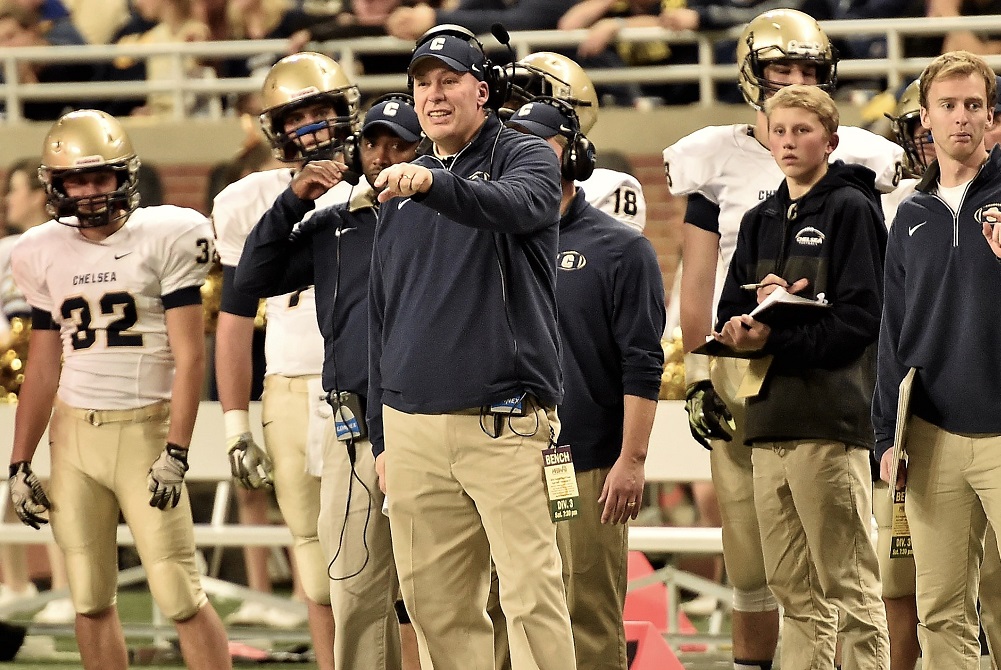
Study: Single-Sport Athletes Injured More
November 3, 2016
A study conducted by the University of Wisconsin School of Medicine and Public Health and funded by the National Federation of State High School Associations (NFHS) Foundation revealed that high school athletes who specialize in a single sport sustain lower-extremity injuries at significantly higher rates than athletes who do not specialize in one sport.
The study was conducted throughout the 2015-16 school year at 29 high schools in Wisconsin involving more than 1,500 student-athletes equally divided between male and female participants. The schools involved in the study represented a mixture of rural (14), suburban (12) and urban (3) areas, and enrollments were equally diverse with 10 small schools (less than 500 students), 10 medium schools (501-1,000 students) and nine large schools (more than 1,000 students).
Athletes who specialized in one sport were twice as likely to report previously sustaining a lower-extremity injury while participating in sports (46%) than athletes who did not specialize (24%). In addition, specialized athletes sustained 60 percent more new lower-extremity injuries during the study than athletes who did not specialize. Lower-extremity injuries were defined as any acute, gradual, recurrent or repetitive-use injury to the lower musculoskeletal system.
“While we have long believed that sport specialization by high school athletes leads to an increased risk of overuse injury, this study confirms those beliefs about the potential risks of sport specialization,” said Bob Gardner, NFHS executive director. “Coaches, parents and student-athletes need to be aware of the injury risks involved with an overemphasis in a single sport.”
Among those who reported previously sustaining a lower-extremity injury, the areas of the body injured most often were the ankle (43%) and knee (23%). The most common types of previous injuries were ligament sprains (51%) and muscle/tendon strains (20%).
New injuries during the year-long study occurred most often to the ankle (34%), knee (25%) and upper leg (13%), with the most common injuries being ligament sprains (41%), muscle/tendon strains (25%) and tendonitis (20%).
In addition, specialized athletes were twice as likely to sustain a gradual onset/repetitive-use injury than athletes who did not specialize, and those who specialized were more likely to sustain an injury even when controlling for gender, grade, previous injury status and sport.
Thirty-four (34) percent of the student-athletes involved in the Wisconsin study specialized in one sport, with females (41%) more likely to specialize than males (28%). Soccer had the highest level of specialization for both males (45%) and females (49%). After soccer, the rate of specialization for females was highest for softball (45%), volleyball (43%) and basketball (37%). The top specialization sports for males after soccer were basketball (37%), tennis (33%) and wrestling (29%).
The study, which was directed by Timothy McGuine, Ph.D., ATC, of the University of Wisconsin, also documented the effects of concurrent sport participation (participating in an interscholastic sport while simultaneously participating in an out-of-school club sport), which indicated further risk of athletes sustaining lower-extremity injuries.
Almost 50 percent of the student-athletes involved in the survey indicated they participated on a club team outside the school setting, and 15 percent of those individuals did so while simultaneously competing in a different sport within the school. Seventeen (17) percent of the student-athletes indicated that they took part in 60 or more primary sport competitions (school and club) in a single year. Among those student-athletes in this group who sustained new lower-extremity injuries during the year, 27 percent were athletes who specialized in one sport.
The student-athletes involved in the study were deemed “specialized” if they answered “yes” to at least four of the following six questions: 1) Do you train more than 75 percent of the time in your primary sport?; 2) Do you train to improve skill and miss time with friends as a result?; 3) Have you quit another sport to focus on one sport?; 4) Do you consider your primary sport more important than your other sports?; 5) Do you regularly travel out of state for your primary sport?; 6) Do you train more than eight months a year in your primary sport?
Although some sports (field hockey, lacrosse) are not offered in Wisconsin and were not included in the study, the study concluded that since specialization increased the risk of lower-extremity injuries in sports involved in the survey it would also likely increase the risk of injuries in sports that were not a part of the study.

Longtime Chelsea High School Administrator, Coach Bush to Join MHSAA Staff as Assistant Director
By
Geoff Kimmerly
MHSAA.com senior editor
December 21, 2022
Brad Bush, a highly-respected educator, administrator and coach over the last three decades, has been selected to serve in the position of assistant director for the Michigan High School Athletic Association, beginning Jan. 17.
 Bush, 52, taught and coached at East Kentwood High School for four years before beginning a tenure at Chelsea High School in 1997 that has included teaching, then serving as athletic director and later also assistant principal and leading the football program as varsity coach from 1997-2002 and again from 2004-18.
Bush, 52, taught and coached at East Kentwood High School for four years before beginning a tenure at Chelsea High School in 1997 that has included teaching, then serving as athletic director and later also assistant principal and leading the football program as varsity coach from 1997-2002 and again from 2004-18.
He also has served as a statewide delegate on the MHSAA Representative Council during the last year and provided leadership in multiple roles, including president, for the Michigan High School Football Coaches Association (MHSFCA) since 2005.
Bush will serve as the MHSAA’s lead administrator for baseball and also among lead administrators for the officials program, which includes more than 8,000 registered officials in all sports. Bush also will be assigned additional duties in other sports based on his vast experiences. He was selected from a pool of 34 applicants.
“I’m incredibly excited to have Brad join our team,” MHSAA Executive Director Mark Uyl said. "He’s been an outstanding athletic director and coach who is highly-respected by those who know him.”
As Chelsea athletic director, Bush annually has supervised a staff of 110 coaches across 31 programs, with nearly 70 percent of the high school’s 800 students participating in athletics. As a teacher and assistant principal, he has served on Chelsea’s School Improvement Team and on multiple committees that provided instructional leadership including in the development of the district’s new trimester schedule. In his roles with the MHSFCA, Bush helped direct an organization with more than 2,200 members and also served as the association’s treasurer and liaison to the MHSAA.
Bush is perhaps best known, however, for his coaching success. Over 22 seasons, he led Chelsea’s varsity football team to a 169-60 record, 13 league championships, 18 playoff appearances, seven District titles and a Division 3 runner-up finish in 2015. During his break in tenure as Chelsea coach, Bush served as an assistant football coach and recruiting coordinator for Eastern Michigan University during the 2003-04 school year, and he has served as an assistant coach at Albion College the last four seasons contributing to the team’s two league titles and appearance in the 2021 NCAA Division III Playoffs.
“I feel like joining the team at the MHSAA is an opportunity I couldn’t pass up,” Bush said. “The 26 years I spent at Chelsea were some of the best times of my life. It’s a professional transition that in the back of my mind, if this opportunity came, was something I needed to do.
“Over time, I’ve grown to care about the bigger picture of athletics and appreciate the role of the MHSAA in protecting high school athletics in Michigan.”
Bush is a 1988 graduate of Ypsilanti High School. He studied and played quarterback at Cornell University before returning and graduating from EMU after majoring in history and minoring in social studies. He earned his physical education endorsement from EMU in 2000 and his master’s in physical education and sports management from EMU in 2002. He has earned continuing education credits in sports management from Drake University and completed the Path to Leadership program from the Michigan Association of Secondary School Principals (MASSP).
Bush was inducted into MHSFCA Hall of Fame and Ypsilanti High School Hall of Fame both in 2019. He and his wife Laura have three adult children, two daughters and a son.
PHOTO Chelsea coach Brad Bush directs his team during the 2015 Division 3 Final at Ford Field.

